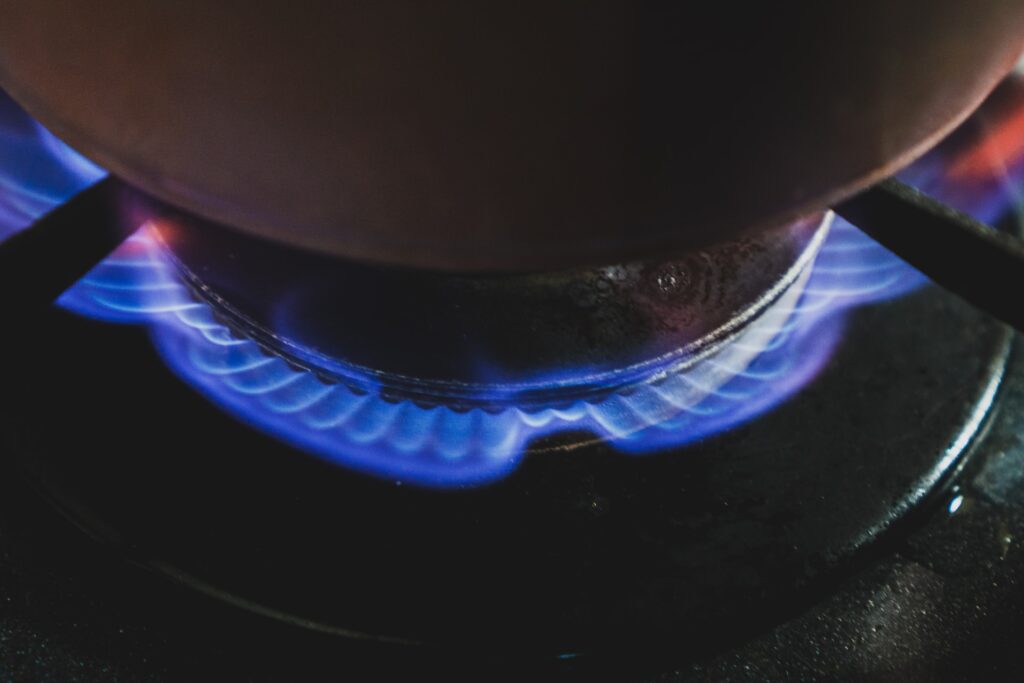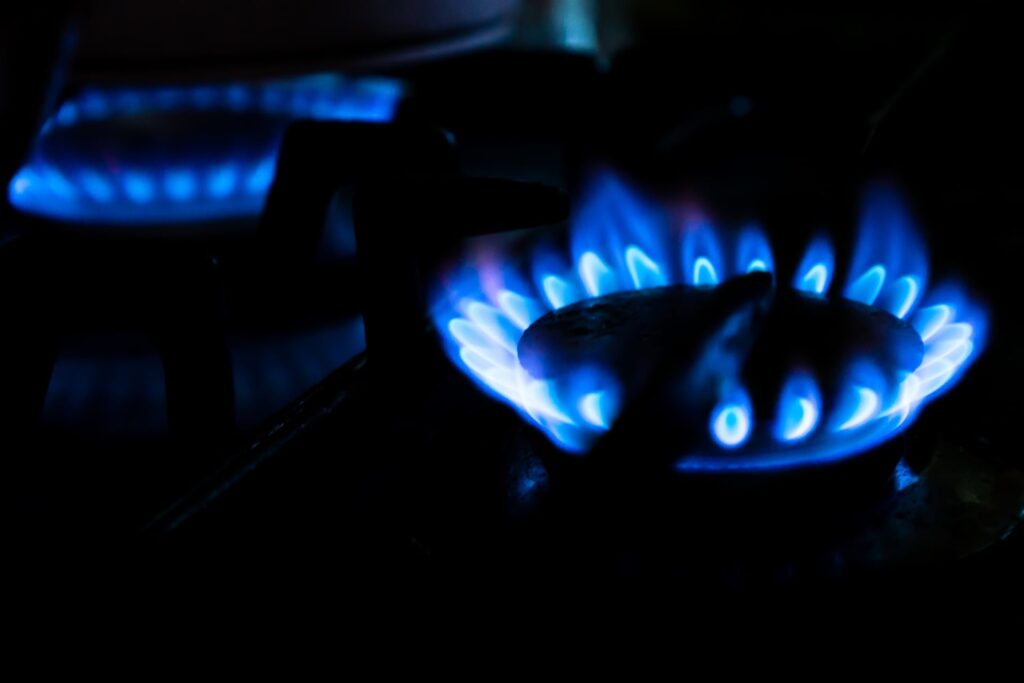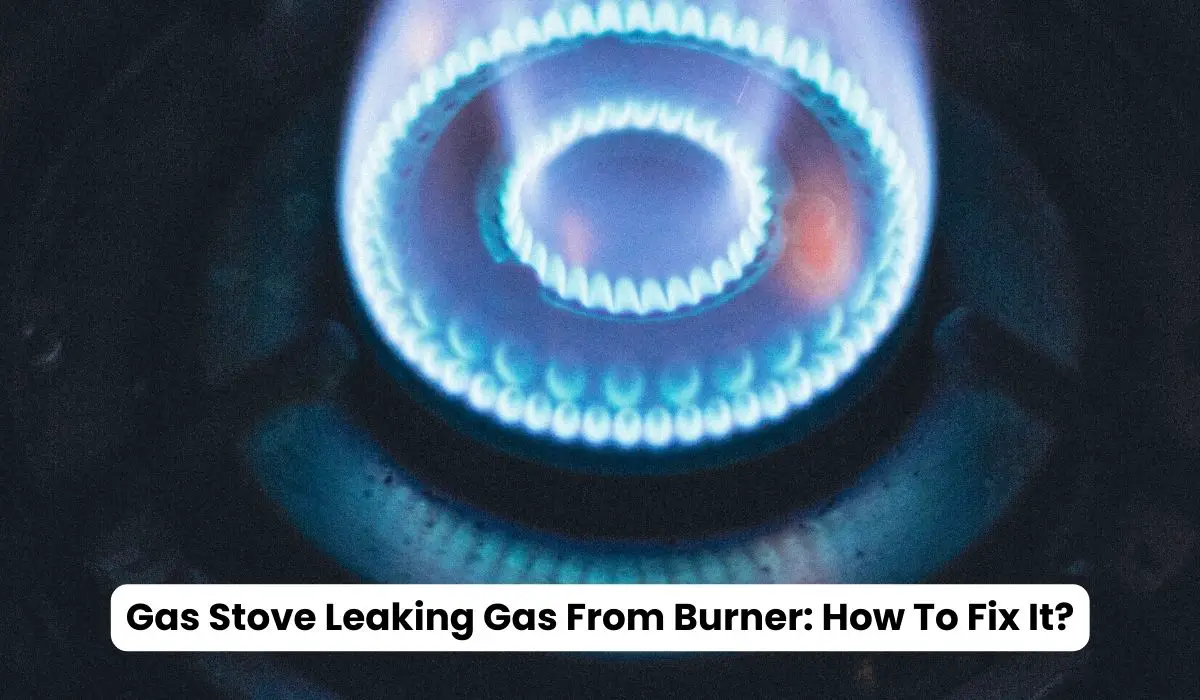Gas stoves play a central role in our kitchens, providing a reliable means of preparing meals efficiently. However, encountering the unsettling issue of a gas stove leaking gas from the burner can cause concern. Protecting our homes and loved ones is paramount, making it essential to address such a situation promptly and effectively. In this article, we will delve into the common reasons behind gas stoves leaking gas from a burner, equip you with safety measures, and guide you step-by-step on fixing this issue while keeping it easy to understand and implement.
So, you’re in the right place if you’ve ever wondered about the best action guide when faced with a “Gas Stove Leaking Gas From Burner” scenario.
Let’s explore the solutions together to ensure a secure and functional kitchen environment.
Table of Contents
Reasons Why Gas Stove Leaking Gas From Burner:

Gas stoves have long been a staple in kitchens, making cooking efficient and convenient. However, suppose you ever face the unsettling issue of a gas stove leaking gas from the burner. In that case, it’s crucial to understand the underlying reasons behind this potentially hazardous situation. Let’s explore some common causes of gas stove leaks and learn how they can occur.
1. Worn-out Seals and Gaskets
Over time, the seals and gaskets that ensure a tight connection between the burner and the gas supply line can deteriorate. This deterioration can lead to small leaks, which, if left unaddressed, can escalate into more significant issues.
2. Loose Connections
Gas stoves consist of multiple components; over time, the connections between these components can become loose due to regular usage and vibrations. A flexible link between the burner and the gas supply line can result in gas leakage.
3. Faulty Burner Valves
The valves that control gas flow to the burners can be fixed. If these valves don’t close properly, they can allow gas to escape even when the burner is turned off.
4. Damaged Burner Components
Burners can accumulate debris, grease, and food particles, leading to clogs. These clogs can disrupt the proper flow of gas and result in leakage around the burner area.
5. Age and Wear
Just like any appliance, gas stoves have a lifespan. The internal components can wear out with age, increasing the likelihood of gas leaks. Regular maintenance can help mitigate this risk.
6. Poor Installation
Improper gas supply line installation or burner components can create weak points where gas can escape. It’s essential to ensure that a professional installs your gas stove correctly.
7. Physical Damage
Accidental knocks or impacts to the stove can damage the connections, seals, or valves, leading to gas leaks. Care should be taken to avoid any physical damage to the stove.
8. Corrosion
Over time, exposure to moisture and certain chemicals can cause corrosion on the burner and gas supply line, compromising their integrity and potentially causing gas leaks.
Signs of a Gas Stove Leaking Gas From the Burner:

Gas stoves are a fundamental part of our kitchens, offering convenience and efficiency in our daily cooking routines. However, the potential for a gas stove to leak gas from its burner can pose serious safety concerns. Recognizing the signs of a gas stove leak is essential for preventing hazardous situations and taking immediate corrective action. Here are the telltale signs that indicate a gas stove is leaking gas from its burner.
If you encounter this issue, check out our article on how to fix a pilot light on a gas stove? for step-by-step instructions on resolving the problem and ensuring the safety of your kitchen.
1. Unusual Odor
One of the most distinct signs of a gas leak is the smell of gas. Natural gas is odorless, but gas companies add a sulfur-like odor (like rotten eggs) to make leaks easier to detect. If you notice this pungent odor in your kitchen, it indicates a gas leak.
2. Hissing Sound
A hissing or hissing-like sound around the burner area can suggest that gas is escaping from the stove. This sound is caused by the gas pressure forcing it through a small opening.
3. Yellow or Orange Flames
While gas burners typically produce blue flames, a gas leak can alter the color of the fire. If you notice yellow or orange flames instead of blue, it could indicate incomplete combustion due to a gas leak.
4. Physical Symptoms
Exposure to leaking gas can lead to physical symptoms such as dizziness, nausea, headaches, and even breathing difficulties. If you or your family members experience these symptoms while using the stove, it’s essential to investigate a gas leak.
5. Dead or Dying Plants
Gas leaks don’t just affect indoor air quality; they can also impact plants. If you have indoor plants near the gas stove and notice them wilting or dying unexpectedly, it could be a sign of gas leakage.
6. Higher Gas Bills
An unexplained increase in your gas bills could indicate a gas leak. Even a small leak can cause significant wasted gas, which will be reflected in your monthly utility bills.
7. Visible Damage
Physical damage to the burner, gas lines, or connections can lead to gas leaks. If you observe any visible cracks, corrosion, or other damage, it’s crucial to address it promptly.
8. Flame Extinguishment
If the flames on your gas stove frequently go out or seem weak and inconsistent, it could be due to a gas leak affecting the proper gas flow to the burners.
How To Check For Gas Leaks When Using Your Stove:
How To Fix Gas Stove Leaking Gas From Burner:

1. Swift Gas Supply Shutdown
Prompt action is crucial if you suspect a gas stove leak from the burner. Start by turning off the gas supply. Either switch the stove’s knob to “off” or shut the main gas valve in your home.
2. Spotting the Leak
Once the gas supply is cut, your next move is to locate the leak. An easy way is to employ a solution of soap and water. This mixture creates bubbles when it encounters a gas leak. Carefully check connections, valves, and burners to identify the source.
3. Secure Connections
Loose connections are often to blame for leaks. Gently tighten loose connections, ensuring a snug fit without damaging the gas line.
4. Part Replacement
For worn-out parts, like valves or burners, consider replacing them. Consult your gas stove’s manual for step-by-step guidance, or enlist professional help if you need clarification.
5. Clearing Debris
Debris-blocking burners can also lead to leaks. Thoroughly clean the burners and their surroundings using a soft brush or cloth. Once clean, reassemble the burners.
6. Safely Relighting
With the leak resolved and components back in place, it’s time to relight the stove. Follow the manufacturer’s instructions for relighting. This typically involves turning the knob to the “on” position.
7. Seek Professional Aid
While these steps can help you tackle minor leaks, severe cases or uncertainty in your actions necessitate professional intervention. Prioritize the safety of your home and family by seeking expert help when needed.
By adhering to these simple yet effective steps, you can promptly and efficiently address a gas stove’s burner gas leak. Remember that prioritizing safety is critical, and if in doubt, always consult professionals to ensure your home’s well-being.
Safety Precautions For Gas Stove Leaking Gas:

1. Ventilation Is Key
Proper ventilation in your kitchen is the first line of defense against potential gas leaks from your stove. Ensure your kitchen is well-ventilated by keeping windows open or using exhaust fans. This helps to disperse any leaked gas and prevent its accumulation.
2. Regular Inspection
Frequent visual inspections of your gas stove can be crucial in detecting leaks early. Check for noticeable wear and tear in the gas lines, connectors, and knobs. If you notice any cracks, corrosion, or loose fittings, it’s time to replace or repair them promptly to avoid potential gas leaks.
3. No DIY Repairs
If you notice a gas leak or suspect one, it’s essential to refrain from attempting to fix the issue yourself. Trained professionals should always carry out gas-related repairs to handle such situations. Attempting a DIY fix can lead to further complications or even accidents.
4. Immediate Action: Shut Off and Ventilate
If you smell gas or suppose a leak, don’t hesitate. Turn off the gas supply to the stove immediately. Then, open windows and doors to permit fresh air to ventilate. Avoid using electrical appliances or switches, as a spark could ignite the gas. Once the area is well-ventilated, contact a technician to inspect and repair your gas stove.
5. No Open Flames or Ignition Sources
During a gas leak, avoiding any potential ignition sources is crucial. This includes not lighting matches, candles, or using any appliances that involve flames. Even a tiny spark can result in a dangerous fire or explosion. Exercise extreme caution until the gas leak is resolved.
6. Gas Detectors Save Lives
Consider installing a gas detector near your gas stove. These devices are designed to alert you if they sense the presence of gas in the air, giving you an early warning system for potential leaks. Regularly test the detector to ensure its functionality.
7. Keep Surroundings Clean and Clear
Maintain a clutter-free area around your gas stove. Flammable materials, paper towels, or curtains should be kept from the stove. These items can catch fire quickly if exposed to a gas leak.
8. Professional Check-ups
Regular maintenance by a qualified technician is vital for preventing gas leaks. Schedule professional inspections at least once a year to ensure that all gas lines, connections, and valves are in good condition. This aggressive method significantly reduces the risk of gas leaks and enhances your kitchen’s safety.
9. Educate Your Household
Ensure everyone in your household knows the safety precautions related to gas stoves and leaks. Teach them to detect a gas leak, turn off the gas supply, and safely evacuate the area. Preparedness and awareness can make a significant difference in handling emergencies.
Is it normal to smell gas from a burner?
Yes, it is customary to smell a faint whiff of gas when you first turn on a burner. This happens due to the momentary release of gas from the lines after a period of inactivity. However, it’s not normal if the smell persists vigorously or continuously. It could indicate a potential gas leak or a malfunctioning burner.
In such cases, it’s essential to take immediate precautions: turn off the burner, ensure proper ventilation, and, if necessary, contact a professional to address the issue and ensure your safety. Regular maintenance and quick attention to unusual odors are critical to safe stove usage.
Conclusion:
At the end of this article, you are equipped with the knowledge to tackle a gas stove leaking gas from a burner. Remember, safety should always come first. If you ever detect a persistent gas odor, immediately turn off the burner, ensure proper ventilation, and seek professional assistance if needed. Regular maintenance, cautious usage, and a keen nose for unusual smells will go a long way in keeping your kitchen a secure and enjoyable space for your culinary endeavors.
Is a gas leak from the burner dangerous?
Yes, a gas leak from the burner is dangerous as it can lead to fire, explosion, or health hazards due to inhalation of gas fumes.
Are gas leaks common?
Gas leaks are rare but can occur due to aging appliances, poor maintenance, or accidents. Regular maintenance reduces the risk.
Can I prevent gas leaks without professional help?
Yes, by maintaining your stove, checking for loose connections, and using a gas detector, you can minimize the risk of gas leaks.



